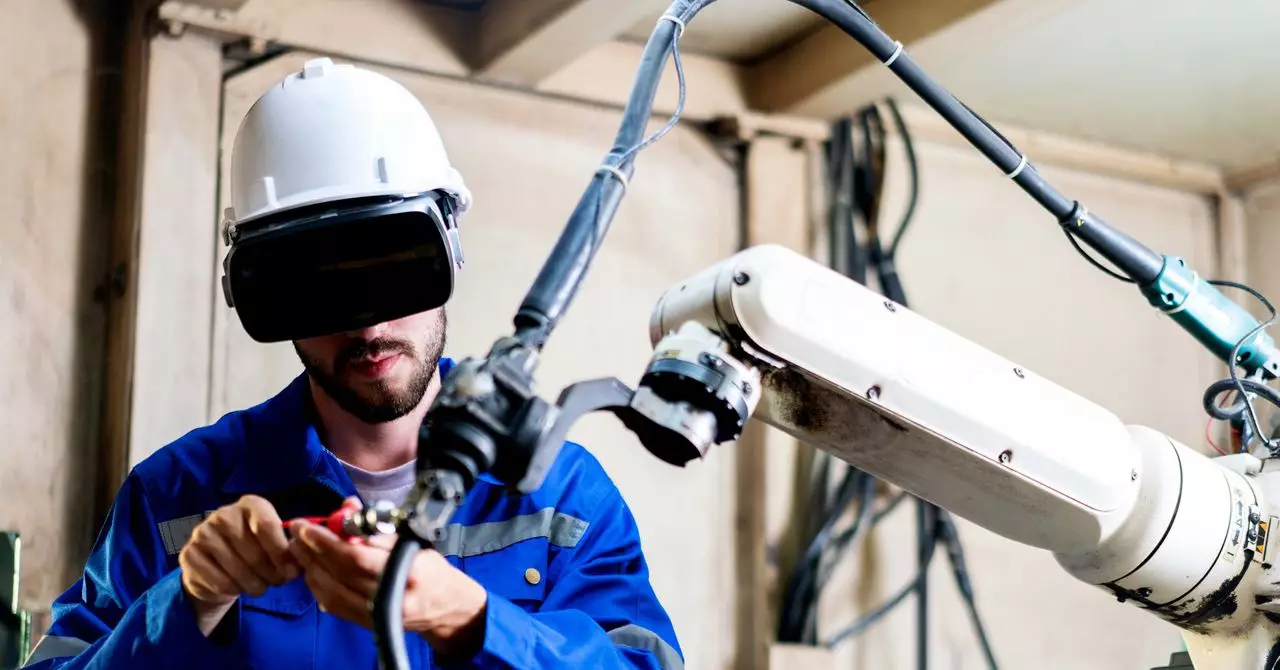In a world where innovation is the heartbeat of progress, the automotive industry stands at the forefront with an astonishing transformation—an evolution powered by what is now being dubbed the industrial metaverse. Traditionally, when automobile manufacturers sought to overhaul production methods, they engaged in labor-intensive, time-consuming processes, literally shoving chassis through assembly lines to identify potential flaws. This archaic method not only drained financial resources but also wasted precious time. Fast forward to today, where the game-changing capability of 3D simulations offers a mind-blowing alternative: a sophisticated digital twin of the factory environment that allows engineers to foresee and rectify potential bottlenecks long before physical production begins.
The True Power of the Industrial Metaverse
While the consumer-focused interpretations of the metaverse have faced hurdles—think awkward virtual gatherings championed by tech moguls—the industrial metaverse is rising like a phoenix from the ashes, projected to surpass a staggering $100 billion in value by 2030, as indicated in a recent World Economic Forum report. However, it is crucial to underscore that the term ‘metaverse’ in this context encompasses much more than just virtual reality escapades; it involves an intricate tapestry of technologies including augmented reality (AR), Internet of Things (IoT) sensors, real-time data analytics, and immersive simulations designed to enhance precision in manufacturing.
Varvn Aryacetas, a prominent figure in Deloitte’s AI strategy, provides an enlightening perspective on this development, referring to it as “spatial computing.” This terminology encapsulates the essence of merging the digital and physical realms—leading to transformative applications that extend beyond mere entertainment. Now, we can envision training sessions in virtual landscapes, savvy digital product designs, and meticulous virtual simulations of factory environments—all crucial elements of this new industrial paradigm.
Nvidia: Pioneering the Future of Digital Twins
At the heart of this revolution lies Nvidia’s Omniverse, a groundbreaking suite of tools that empowers businesses to construct their own simulations and operate digital twins, replete with the precision needed for automation. This platform isn’t just a one-trick pony; instead, as Rev Lebaredian, Nvidia’s vice president, articulates, it is a general technology marvel that lends itself to countless applications. The ability to replicate reality for analysis and automation is becoming an indispensable asset, especially in assembling autonomous systems.
Major players in various sectors are harnessing the power of Omniverse. For instance, Lowe’s Home Improvement utilizes this platform to analyze and experiment with new retail layouts digitally before making physical alterations. Similarly, renowned architectural firm Zaha Hadid Architects leverages virtual modeling for seamless remote collaboration, and powerhouse Amazon deploys simulations of warehouse environments to prepare operational robots for real-world scenarios. Meanwhile, BMW has taken a bold step by implementing digital models for all its manufacturing facilities, notably the latest one in Debrecen, Hungary.
Creating Virtual Factories: BMW’s Cutting-Edge Approach
Central to BMW’s innovative prowess lies its meticulous approach to virtual factory technology. The automaker does not merely dabble in digital mock-ups; it intricately fills these virtual factories with highly detailed 3D models of vehicles, machinery, and even manpower. By utilizing an open-source file format developed by Pixar known as Universal Scene Description (OpenUSD), BMW lays the groundwork for experimentation and optimization with exceptional precision. Matthias Mayr, a virtual factory specialist at BMW, emphasizes the computational complexity involved—akin to navigating an extensive city grid, signifying the importance of advanced simulation techniques for large-scale factory designs.
What’s remarkable is the adaptation of gaming technology to improve the virtual factory experience. Initially, early iterations allowed users to navigate using gaming-style controls, but as the immersive simulation evolved, a more accessible, user-friendly interface akin to Google Street View was adopted. This commitment to usability ensures that individuals at all levels of the company can engage meaningfully with highly complex digital models, fostering collaboration and innovation.
Implications for the Future of Manufacturing
The full scope of the industrial metaverse represents not just a fleeting trend but a seismic shift in how manufacturing processes are conceived and executed. By efficiently bridging the gap between physical and digital realms, companies can analyze and adapt their operations with unprecedented foresight. As organizations continue to harness the extraordinary capabilities of the industrial metaverse, the future of manufacturing looks brighter than ever—infused with the promise of enhanced productivity, intelligent design, and a commitment to innovation that resonates across industries.

